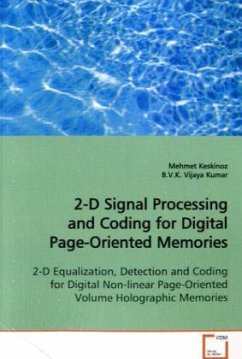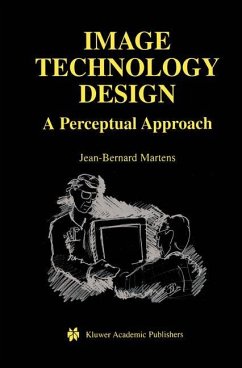Digital page-oriented Volume Holographic Storage
(VHS) is a promising digital storage technology
because of its high data storage density, high data
rate and short access times. As the storage density
increases, the performance of volume holographic
storage channels is degraded due to increased two-
dimensional (2-D) intersymbol interference (ISI) and
noise. The output detector array in VHS detects the
intensity of the incident light wave-front leading
to sign information loss. This sign loss precludes
the applicability of conventional
equalization/detection schemes to mitigate ISI. In
this book, we first address channel modeling under
the quadratic nonlinearity and then develop 2-D
equalization/detection methods such as linear
minimum mean square (LMMSE) equalization, iterative
magnitude square decision feed back equalization
(IMS DFE) and partial response maximum likelihood
(PRML) to mitigate 2-D ISI under quadratic
nonlinearity. We also evalu ate the effect of
modulation coding, particularly balanced codes and
low pass coding. We finally investigate the
performances of the equalization/detection methods
under optical magnification error.
(VHS) is a promising digital storage technology
because of its high data storage density, high data
rate and short access times. As the storage density
increases, the performance of volume holographic
storage channels is degraded due to increased two-
dimensional (2-D) intersymbol interference (ISI) and
noise. The output detector array in VHS detects the
intensity of the incident light wave-front leading
to sign information loss. This sign loss precludes
the applicability of conventional
equalization/detection schemes to mitigate ISI. In
this book, we first address channel modeling under
the quadratic nonlinearity and then develop 2-D
equalization/detection methods such as linear
minimum mean square (LMMSE) equalization, iterative
magnitude square decision feed back equalization
(IMS DFE) and partial response maximum likelihood
(PRML) to mitigate 2-D ISI under quadratic
nonlinearity. We also evalu ate the effect of
modulation coding, particularly balanced codes and
low pass coding. We finally investigate the
performances of the equalization/detection methods
under optical magnification error.








